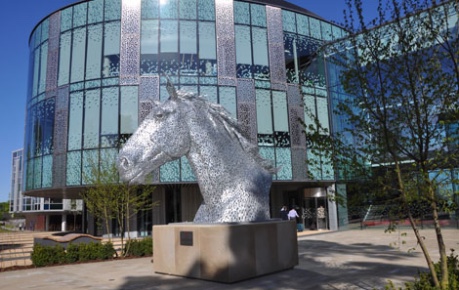Friday 2nd November 2018, 11:00am
The life sciences industry in Scotland is a broad church, covering a very wide range of disciplines. It is a complex matter to categorise all the different businesses, which employ more than 25,000 people in Scotland (the oft-quoted 37,000 jobs includes those working in areas like Higher Education, innovation centres and enterprise agencies who focus on life sciences).

Of the business sub-sectors, pharmaceuticals and medtech take most of the limelight, perhaps understandably as they make up 72 per cent of employment and 70 per cent of turnover.
Three areas which have to shout a little louder for attention are the so-called Triple-A – Agritech, Animal Health and Aquaculture.
That “fantastic growth” in one of the Triple-A, animal health, is based around Easter Bush, close to Roslin in Midlothian.
Everyone knows about Dolly the Sheep, the first mammal to be cloned from an adult cell (at the Roslin Institute) and Roslin remains a key hive of activity. The Institute helps to generate annual productivity gains of £247 million through its breeding and genetic research, with an impact report suggesting it generates £12.87 for every £1 of investment.
“I’m excited about the opportunities for animal health in Scotland. It’s a niche but a growing niche and one where Scotland excels – and Easter Bush is the epicentre,” says John Mackenzie, chief executive of the Roslin Innovation Centre, part of the Easter Bush Campus, which has the highest concentration of animal health activity in Europe.
“I see this area as a Silicon Valley for animal health in five-ten years,” says Mackenzie. “An international asset is taking shape around us.”
The Roslin Innovation Centre opened opposite the world-renowned University of Edinburgh Dick Vet School in August 2017, bringing together clinical teaching, research and enterprise activities - targeting “companies undertaking strategic, commercial and collaborative research into the animal and veterinary sciences, agritech and One Health industries."
One Health aims to achieve optimal health and well-being for people, domestic animals, wildlife and the environment; the Edinburgh International Conference Centre will host the global One Health conference in 2020.
”The area has a huge history and tradition of innovation in this space,” says Mackenzie. “It’s 20-plus years since Dolly the Sheep [born in July 1996] and that’s led through to the stem cell research of today. Roslin is synonymous with Dolly, but we want to find the next big one – maybe linking in with gene editing, which can make a big difference to people’s as well as animals’ lives.
“However, I don’t want Roslin to be too dominant – it’s a world-leading hub, but we want to build the industry across Scotland. There are global market-drivers; it’s often cited that we expect the world’s population to grow by two billion by 2050 and they need to be fed. We have a real sweet spot here and now – to innovate and to showcase exciting young companies.”
A business based at Roslin Innovation Centre was praised for its excellence last month by Life Sciences Scotland. Kate Cameron of Cytochroma, which turns ethically sourced stem cells into liver cells (in the form of mini livers) to predict the safety and toxicity of new drugs, was named as a Rising Star by Life Sciences Scotland and described as “an inspirational young scientist”.
Mackenzie, who is embedded in the wider life sciences community as co-chair of the LSS ILG’s Marketing and Communications Group, is keen to develop more of the same at the centre. “We have big ambitions, including setting up an ‘ag-celerator’ programme to allow young businesses to fast-track their ideas.”
Aquaculture, described by Mackenzie as “ a busy, growing space”, has its own innovation centre, based in Stirling. The website of the Scottish Aquaculture Innovation Centre says the sector has a “current estimated value” of £1.8 billion per year. Hard, up-to-date statistics are rare for the Triple-A, although Scotland has more than 1,000 active researchers in bioscience and aquaculture, one more the largest cluster in Europe.
There is crossover between the Triple-As, especially in the work at Roslin and at another world-leading centre, the James Hutton Institute (JHI) in Invergowrie, Dundee (and Aberdeen) which specialises in crops, soils and land use and environmental research.
Source: Extract from The Scotsman - Friday 2nd November.